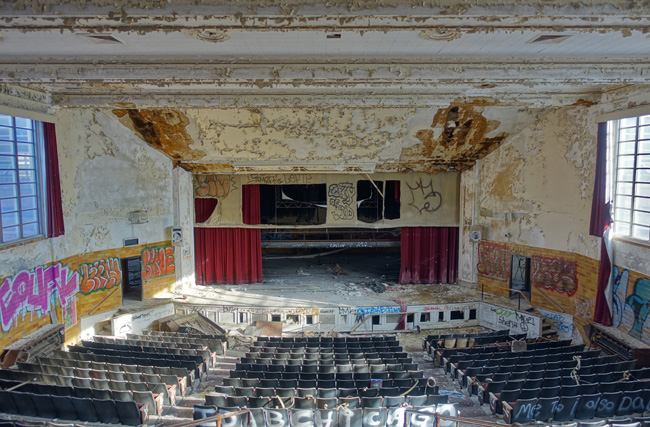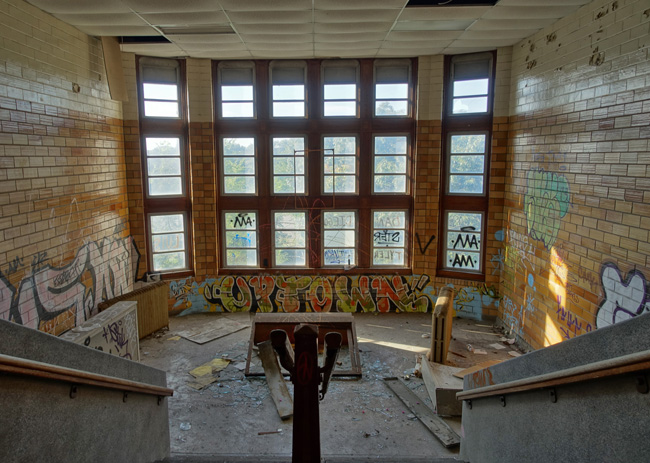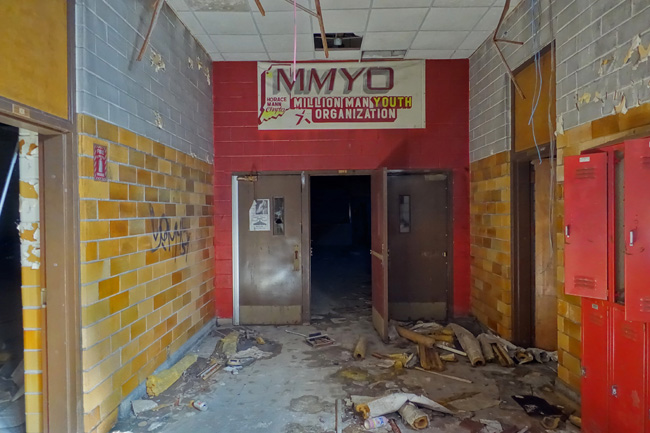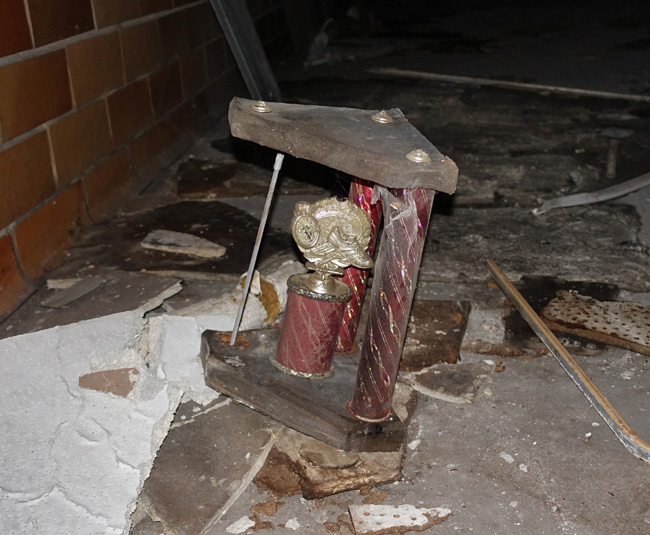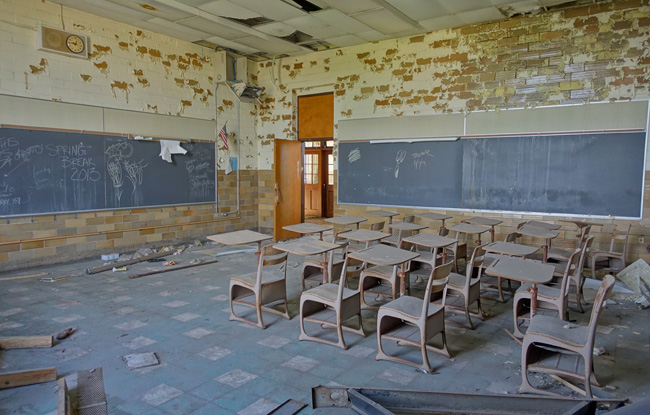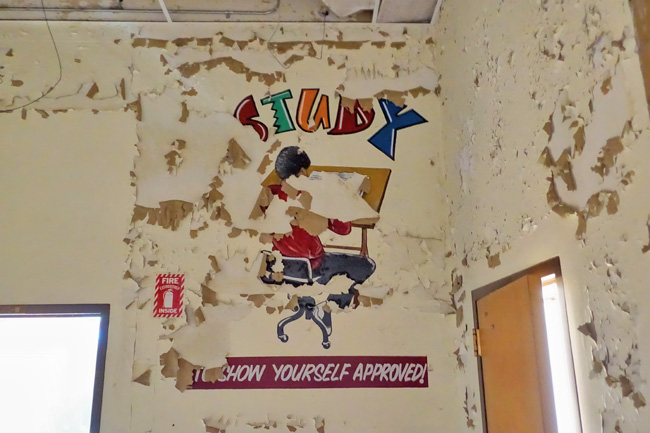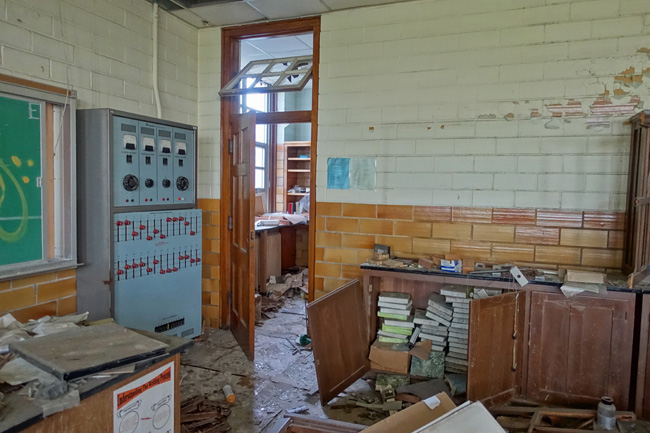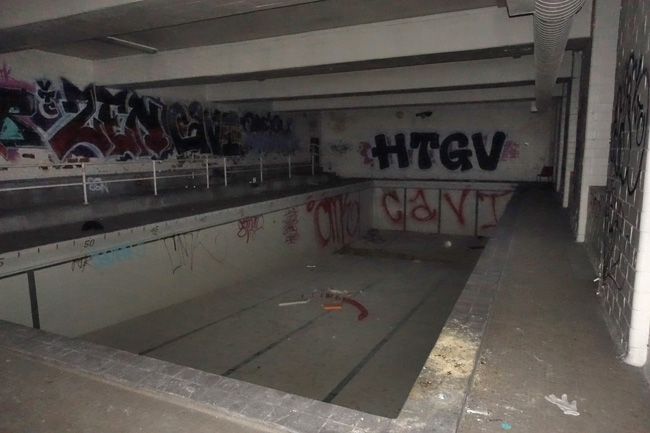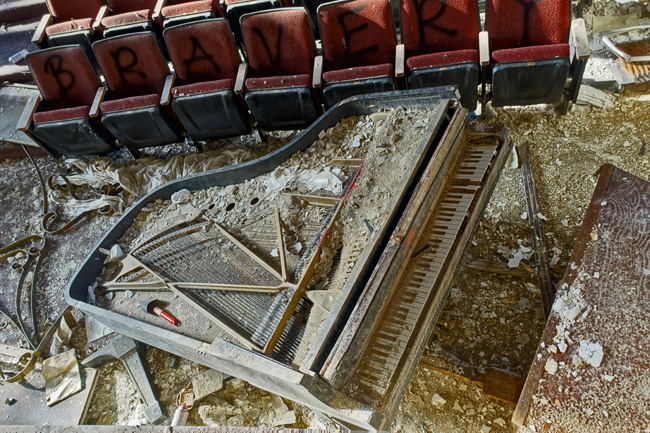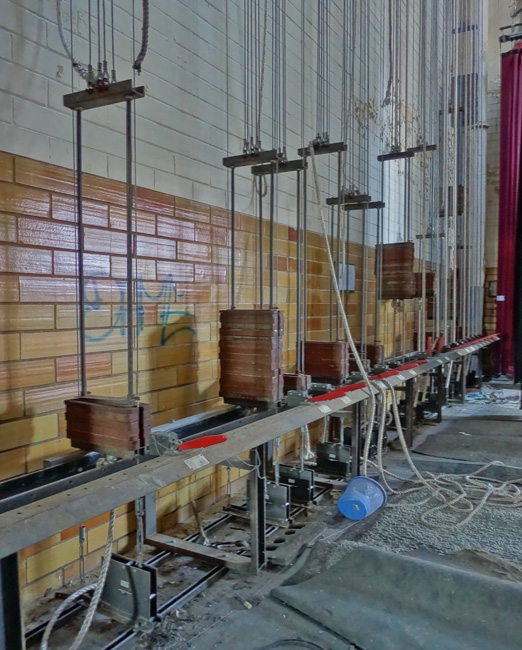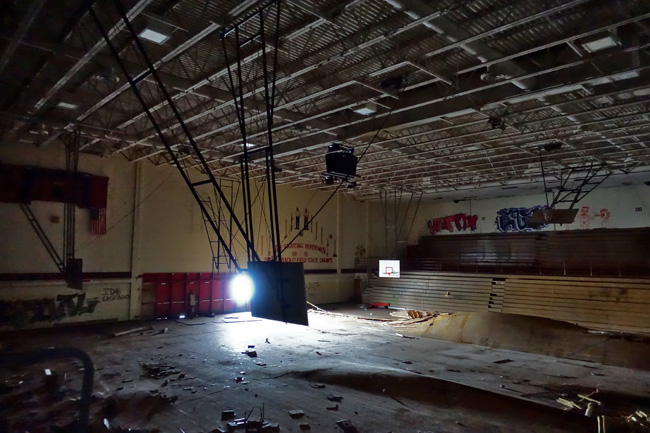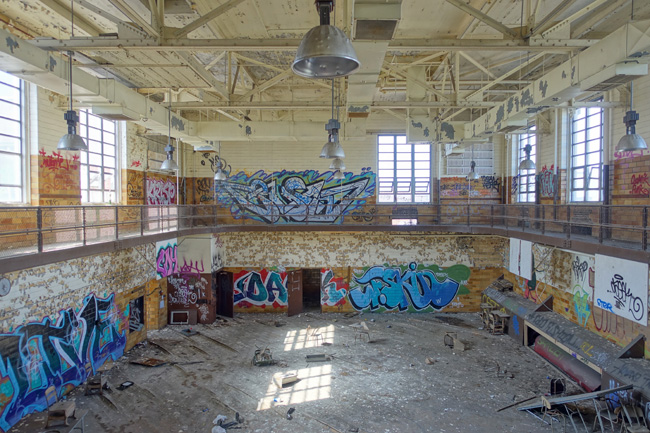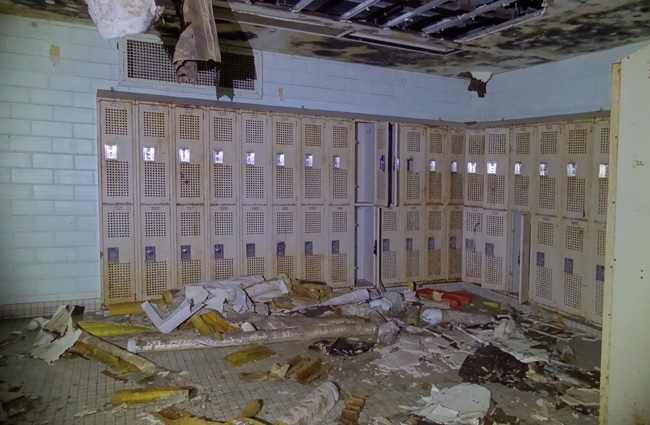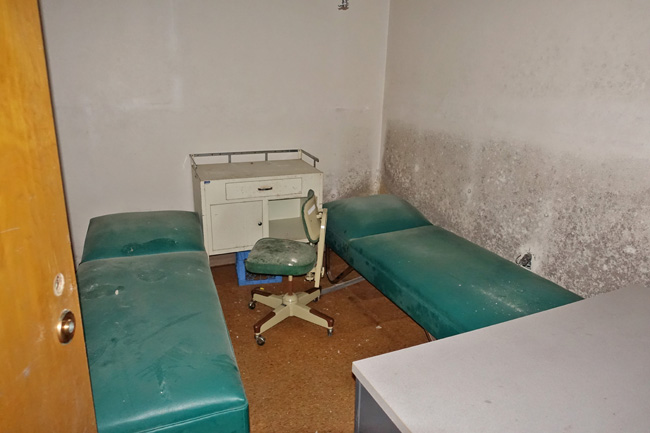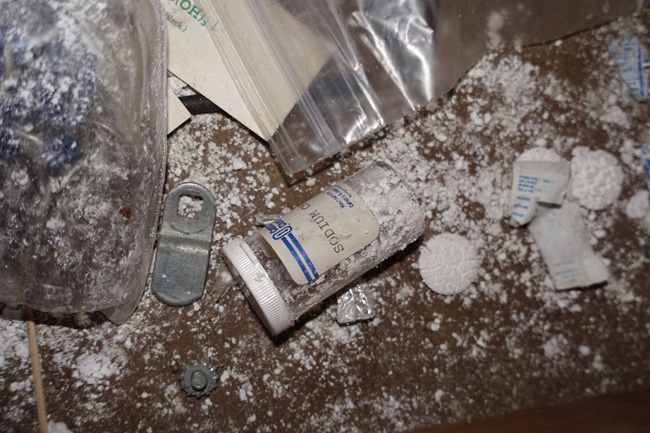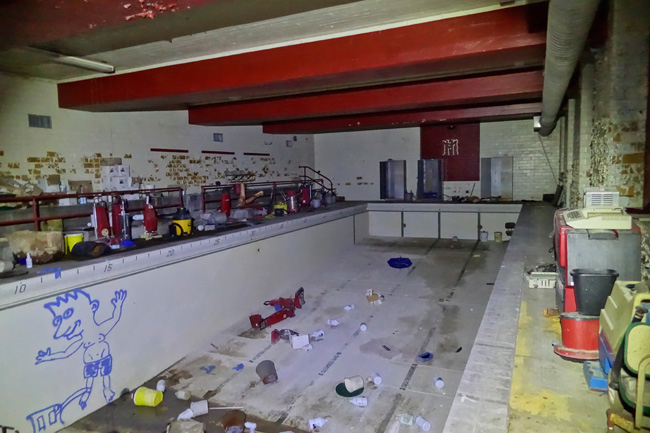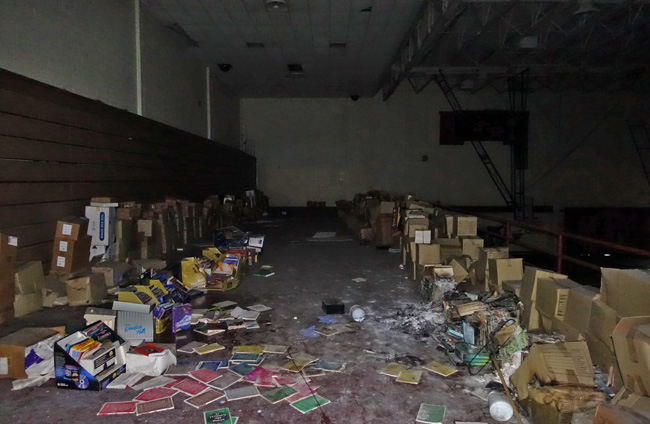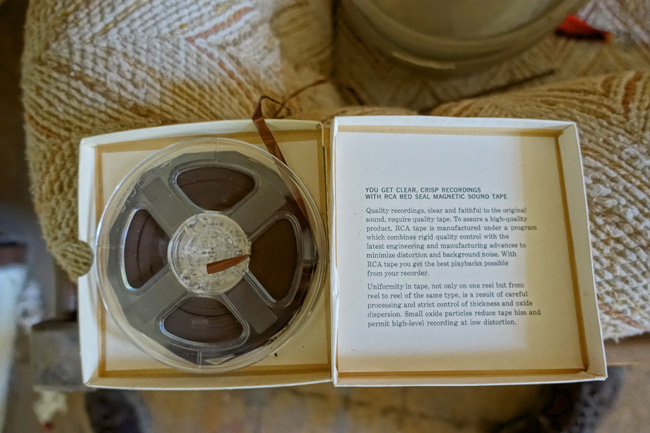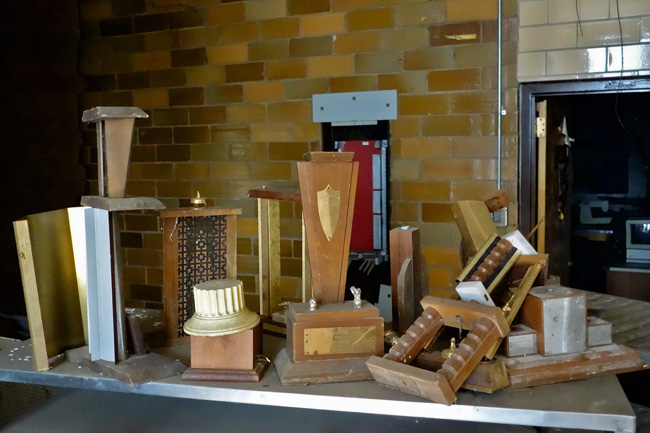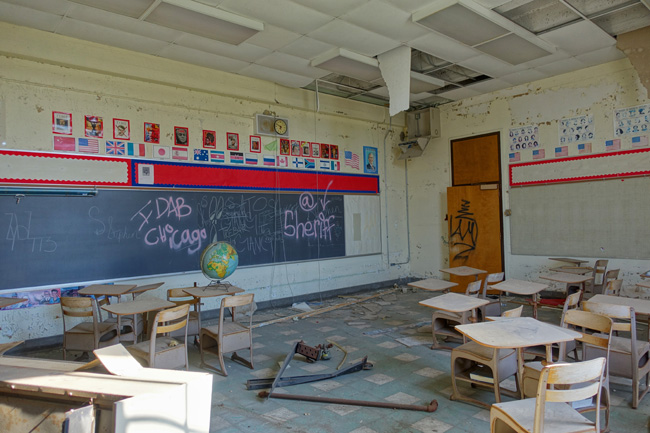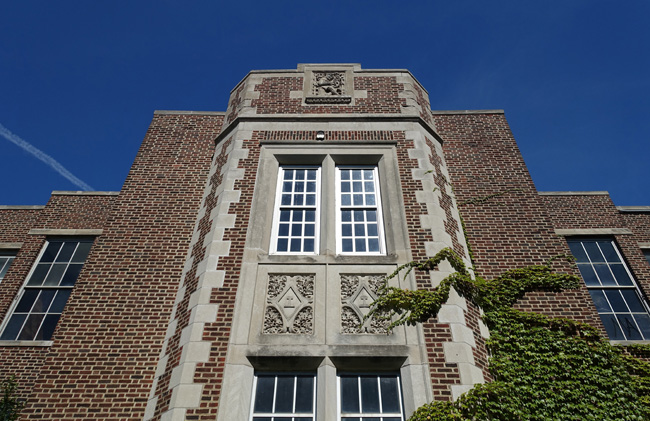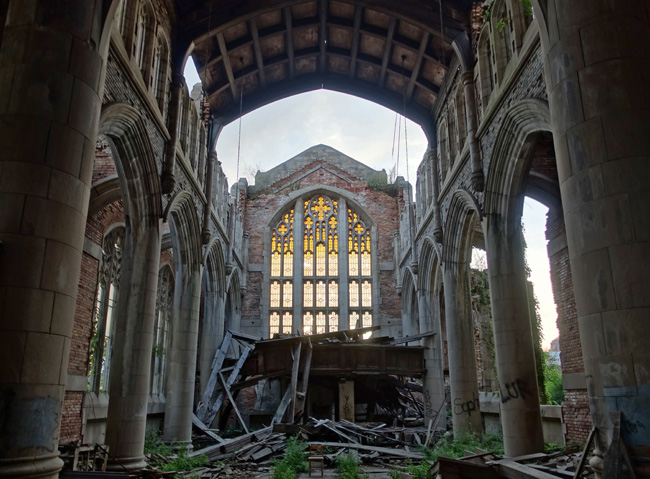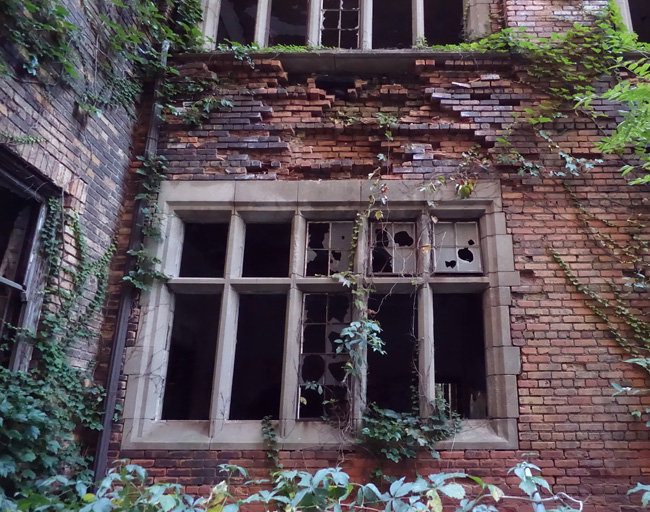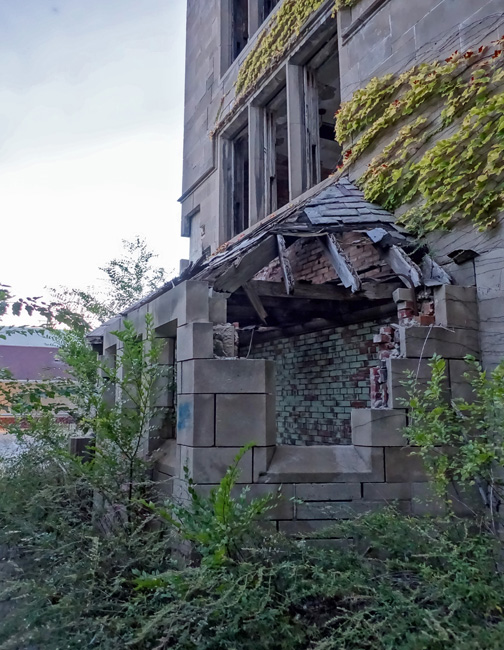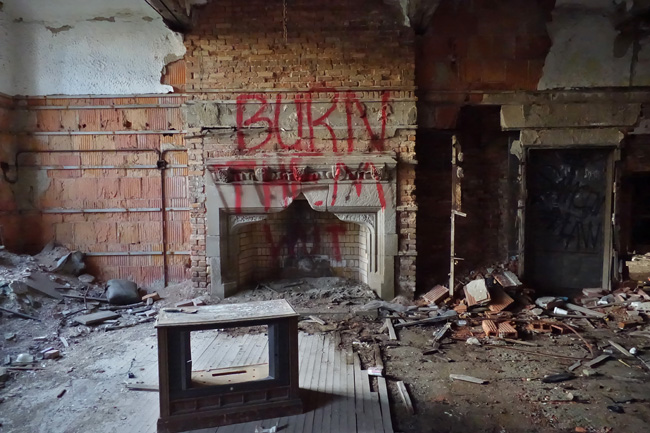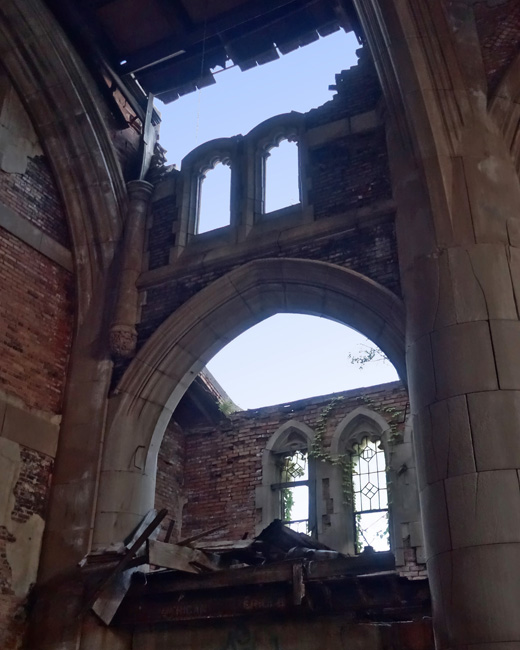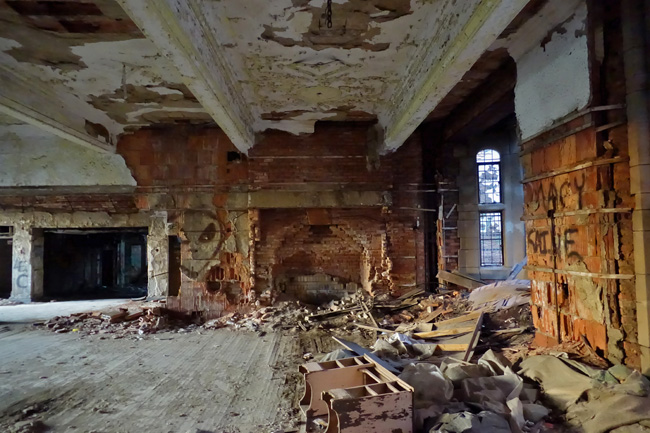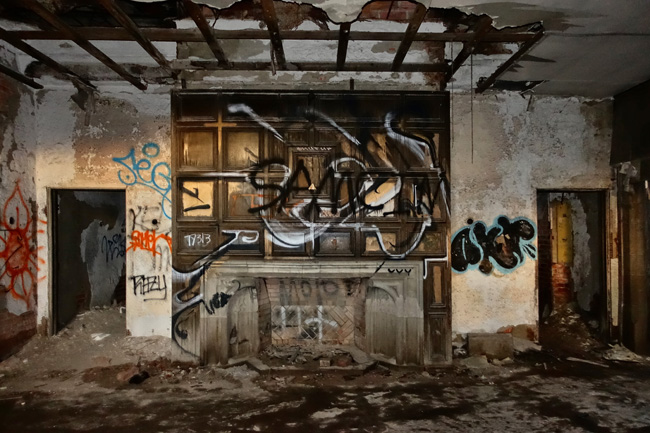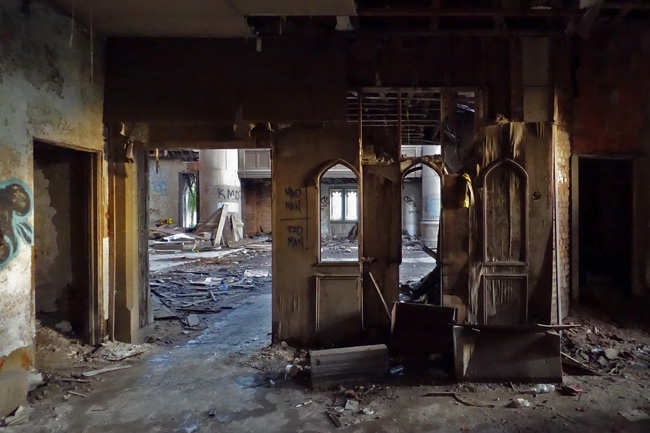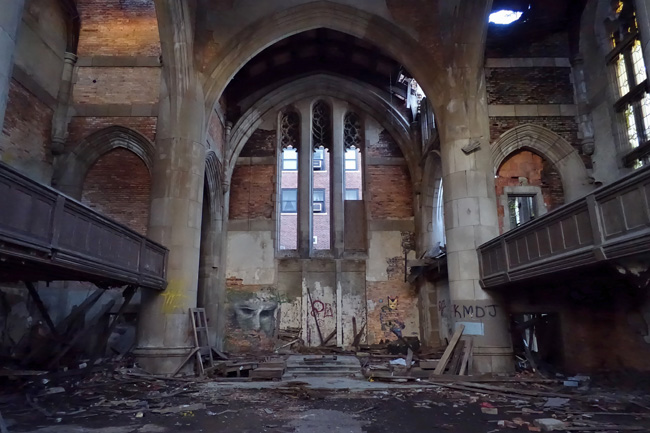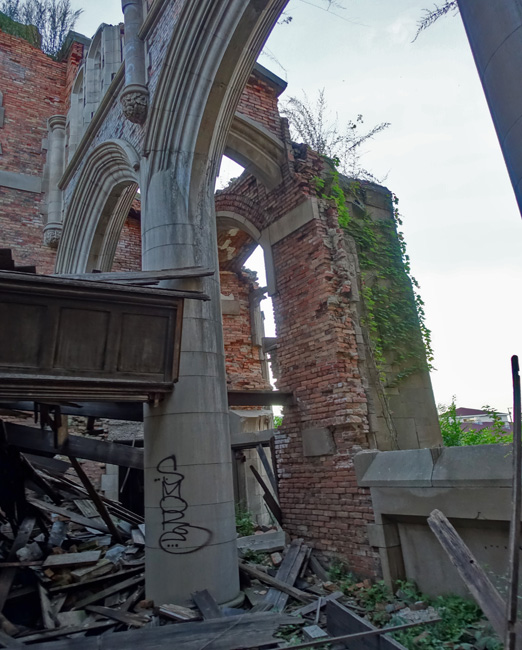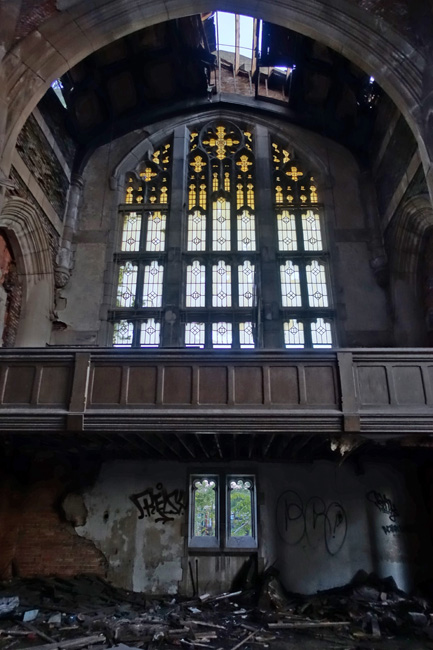I parked beside a crumbling brick apartment building in downtown Gary, Indiana. In the cold autumn morning a few people were still asleep in nearby cars, a cruel irony in a city with so many abandoned homes.
Across the street a sprawling abandoned high school filled the horizon. Like the breathtaking ruins of City Methodist Church, which I had explored the previous evening, Horace Mann School was a casualty of Gary, Indiana's shrinking population.
Several middle-aged couples walked laps along the track that stretched the length of the building.
The school was enormous, with a capacity of around two and a half thousand students. It originally consisted of three main structures that were eventually joined together. The cornerstone of the central building was laid on November 8, 1926 and construction was completed in 1928.
On the large plot of land in front of the school's main entrance, an existing ravine was transformed into a pond with several pedestrian bridges and a rock garden, giving it the appearance of a beautiful park. It was a popular location for picnics, fishing, and ice skating in the winter.
| Historic photo of Horace Mann School with original pond (image courtesy of http://www.horacemann49.com) |
The school was named after Horace Mann, one of the most important reformers of the public school system. He believed that a free society cannot exist without equal access to education and that schools should not be aligned with any particular religious denomination. Though controversial at the time, his ideas eventually became widely accepted throughout the United States. Many schools have been named in his honor.
In 1929 Horace Mann School had a student body of 870. By 1937, it increased to nearly 2400 students and 80 staff members.
When enrollment grew to nearly 2600 in 1956, exceeding Horace Mann's intended capacity, the district decided to build an additional school on the southern portion of the property. John H. Vohr Elementary School opened in in 1958. Sadly, the pond was filled in to make room for a parking lot.
When the steel industry declined in the '60s, the population of Gary began to shrink, as did the city's tax revenue.
By 2003, Horace Mann High School had only 546 students, roughly a fifth of its capacity.
The school closed in 2004 due to budgetary constraints and a greatly diminished student population. The final graduating class consisted of only 72 students. The neighboring John H Vohr Elementary School closed too in 2010.
and a robust physical education program that included two gymnasiums.
An incredible amount of materials were left behind when the school closed.
The science labs were fully stocked, though most of the artifacts have been looted or damaged.
A cursory effort was apparently made to consolidate textbooks and other supplies, some of which were gathered around one of the swimming pools.
Rows of boxes filled with textbooks lined one side of the school's newer gymnasium.
Vandals set fire to some of them. Thankfully it did not spread.
It seems unlikely that the building will ever be put to use again. Vandalism and the elements have taken a heavy toll. There is a great deal of water damage in the basement. The floor of the gym is so heavily warped from moisture that a large section of it has risen up and buckled.
Many online communities have formed, where alumni keep in touch with one another and share fond memories of their time at Horace Mann School. Please feel free to share any memories you have of this magnificent school in the comment section below.
After Horace Mann School, I stopped to appreciate the ruins of another of Gary, Indiana's magnificent historical buildings, the Gary Public Schools Memorial Auditorium.
Thank you for checking out this article. If you enjoyed it, please share it on Facebook.
To receive an email announcement when I post my next article, please subscribe to Places That Were.
Until then, feel free to read my previous posts about the incredible places I explored on my Epic Rust Belt Road Trip.
I have many more photos of Horace Mann School than I was able to include here. I'll be sharing them on social media, so please follow the links below if you'd like to see more of this incredible abandoned place.
Facebook: http://www.facebook.com/placesthatwere
Instagram: http://instagram.com/theplacesthatwere
Twitter: https://twitter.com/placesthatwere/
Tumblr: http://placesthatwere.tumblr.com/
Google+: https://plus.google.com/u/0/+JimSullivanPlacesThatWere/posts
EyeEm: https://www.eyeem.com/u/placesthatwere
Youtube: https://www.youtube.com/jimplicit
500px: https://500px.com/placesthatwere
Thank you!
